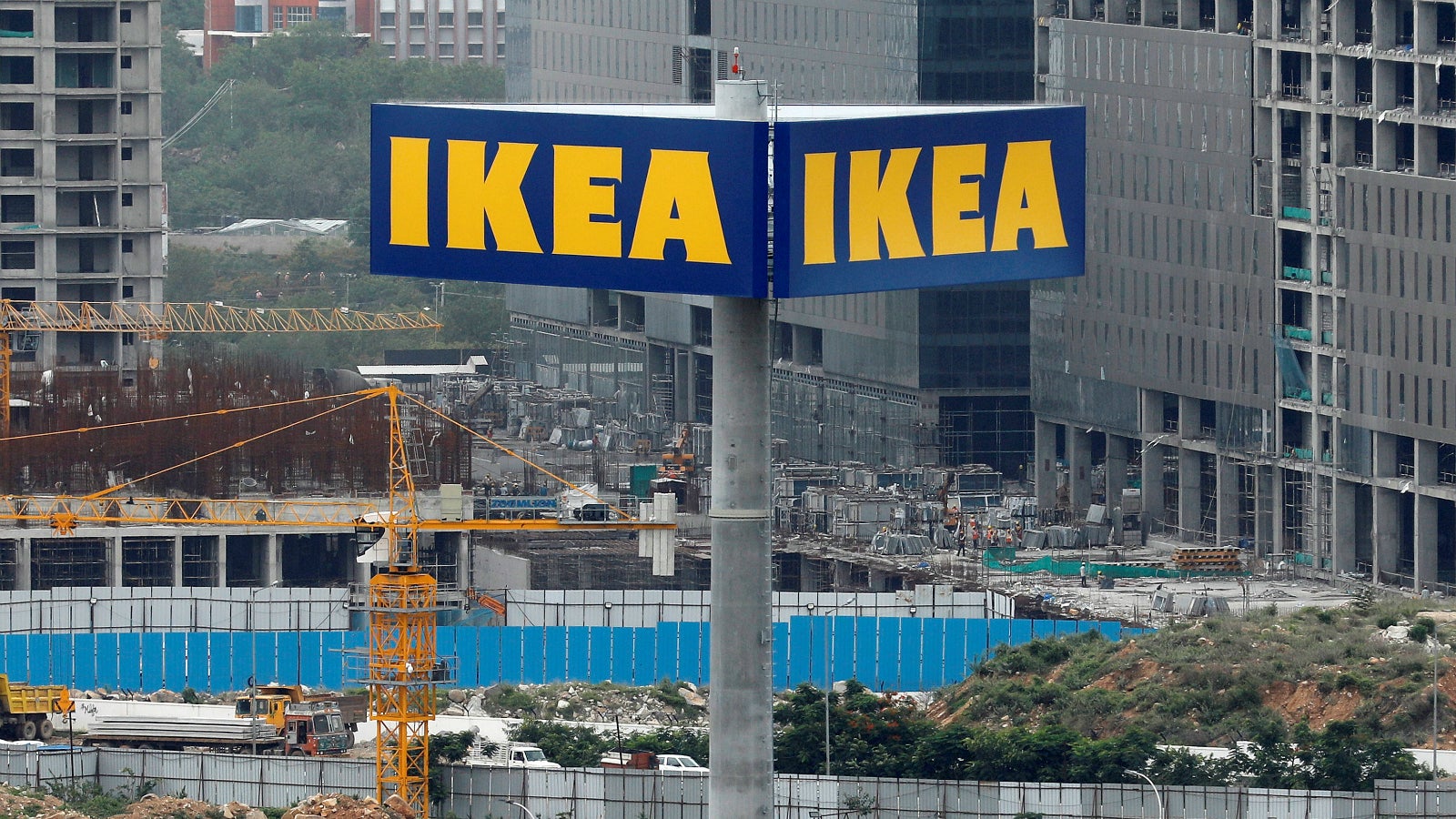IKEA’s first two months in India have been all about small buys and long stays
For the world’s largest furniture retailer, IKEA, the first two months in India have been anything but humdrum.


For the world’s largest furniture retailer, IKEA, the first two months in India have been anything but humdrum.
On Aug. 09, after much anticipation, the Swedish multinational giant had raised its iconic blue-and-yellow signage in Hyderabad, Telangana. From a major traffic jam caused by 40,000 overzealous customers on day one to a later mishap that forced the retailer to pull a dish from its menu, IKEA’s early days in the country have been remarkable enough to write home about.
The one million footfalls that the store has attracted so far prove its reputation preceded it.
More importantly, IKEA, which spent two years and Rs1,000 crore ($134 million) building the store, has finally gotten a pulse of how Indians—largely unfamiliar with its unique concept—want to interact with its brand.
“So people have liked the way we have worked on affordability,” Patrik Antoni, IKEA’s deputy country manager, told Quartz in an interview. “Maybe we didn’t believe so much (at the onset) in our strategy (of low prices) but it shows it actually works.”
What are Indians buying?
IKEA’s store in India sells 7,500 products, ranging from kitchenware, textiles, and hard-furniture to artificial plants. But what is most in demand are its colourful spoons, toolkits, mattresses, and beds.
A Rs15 set of four plastic spoons (made in India) has remained the highest-selling product in the country so far. “We’ve sold more spoon packs than the number of people who have come to our store,” Antoni said. And then there are the retailer’s tool-kits that are moving at a surprisingly quick pace, suggesting that shoppers are getting ready to self-assemble the retailer’s do-it-yourself (DIY) range, Antoni added.
But shoppers are yet to loosen their purse strings; they are still not splurging on the big-ticket items. “People are buying a lot more items but at a lower value. In India, we have an average of 13 products per ticket (bill) which is higher than most other markets.”
Foreseeing this, IKEA deliberately kept product prices in India among the lowest in the world—1,000 products are priced lower than Rs200. Though a magnet to draw first-time shoppers, the lower-priced sales aren’t encouraging for the retailer that has invested heavily to begin operations in India.
Antoni, however, indicated that now big-ticket items are starting to move off the shelves. Among the large furniture pieces, the retailer said, beds and mattresses have seen a strong pick-up. Then, of course, kids’ furniture has been a hit among shoppers, Antoni added.
But not everyone is coming for a glimpse of Scandinavian design.
Shopping or exploring?
Shoppers are doing a mix of both. To IKEA’s surprise, Indians are spending a lot of time inside the Hyderabad store.
After all, the IKEA store is a sprawling 400,000 square-feet complex—navigating the maze can take hours for a first-time shopper.
This is something IKEA has identified and fixed. “We have identified areas where there are challenges on the floor, where people stop a little more, there we have increased customer guidance…during hectic periods we have put more people to help guide shoppers to the next section.”
Shoppers have also taken to the retailer’s food section. When the store opened, the biryani, priced at Rs149, was a hot-seller, until a customer reported finding an insect in the rice dish. The retailer has since then severed ties with the food supplier and temporarily discontinued the dish.
India expansion
With the store up and running in Hyderabad, IKEA is now gearing up to launch the next ones in India’s financial capital Mumbai. On Oct. 11, it will also hold a ground-breaking ceremony for its store in Bengaluru.
For its Mumbai launch next summer, the retailer is going all out to launch multiple formats—a large store in Thane, supported by a small store within the city. IKEA will also activate e-commerce sales to help shoppers both in Mumbai and Hyderabad order its range of goods on the internet.
Moreover, the retailer has announced plans to invest Rs3,000 crore to open more warehouses in Gurugram, Bengaluru, and Mumbai over the next year-and-a-half.
As it expands, IKEA will stay true to its product and price range, it says. But it will adopt some cues it has picked up on the way. “There will be adjustments going into Diwali (maybe we’ll use more lights) and even going into Christmas,” Antoni says.